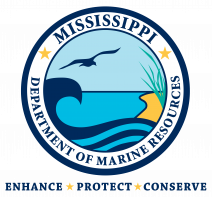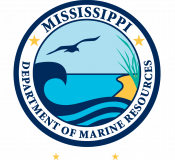21-62-CWS | December 21, 2021
BILOXI, Miss. – The Mississippi Department of Marine Resources (MDMR) is in Phase I of its Remote Oyster Setting Facility Project. Funded by the RESTORE Council, the purpose of the Remote Oyster Setting Facility Project is to support the restoration and protection of natural resources, ecosystems, fisheries, marine and wildlife habitats, beaches and coastal wetlands of the Mississippi Gulf Coast region through the planning, construction and operations activities associated with an oyster setting facility.
During Phase I, planning activities assess the overall feasibility of the facility and determine infrastructure layout, ongoing operational and maintenance costs, setting efficiencies and production milestones. The MDMR identified the Port of Gulfport as the ideal location to situate the proposed Oyster Setting Facility due to its logistic efficiencies of cultch transportation into and out of the setting facility, the site’s capacity to support the facility, optimal water quality conditions, which include salinity regimes, and an existing relationship with the Port of Gulfport. This summer, MDMR set up a small-scale operation in the Port of Gulfport to aid in the feasibility assessment.
Remote setting, a method of oyster seed production, results in multiple baby oysters, also known as spat, attaching to old oyster shell. The resulting oyster seed, referred to as “spat-on-shell,” is a process that begins with oyster larvae from a hatchery. These larvae are then placed in tanks of oyster shell and are allowed to grow for a set period of time. This method ensures that the larvae can grow on suitable substrate in the absence of predators. The spat-on-shell is then deployed on existing reefs to help with the growth and recruitment of natural oyster production for years to come.
This process is important for MDMR because it establishes a water quality and setting efficiency monitoring program which helps develop a profile of optimal water quality conditions and protocols for the process of oyster setting.
“Our MDMR staff have worked diligently on this project, and so far, the results have exceeded our expectations,” said MDMR Executive Director Joe Spraggins. “They have performed this series of medium scale runs throughout the 2021 setting season to determine water quality parameters and testing points which are indicative of successful oyster set and survival to deployment. We are eager to see how these results shape the next phase of the project.”
MDMR acquired a total of 98 million eyed larvae from the University of Southern Mississippi and Auburn University Shellfish Laboratory. This larva was set on oyster shells using natural seawater from Gulfport Harbor pumped into six 1,000-gallon tanks. Over a five-month period, the results show 11,703,819 spat-on-shell oysters were produced resulting in a larva setting efficiency of 16.18% over the course of six individual production cycles. This equates to an average of 16.98 spat per shell. The average size of the oysters planted was 2.74mm for the season. Overall, 46.8 cubic yards of spat-on-shell was deployed in Biloxi Bay on existing MDMR cultch plants.
MDMR staff were able to monitor water quality parameters, including temperature, salinity, dissolved oxygen and pH, on a semi continuous basis throughout the production season. The salinity values ranged from 3.8 ppt to a maximum of 27.0 ppt. The average salinity during setting runs was 13.2 ppt. The harbor exhibited beneficial flushing with high tidal swings and delayed salinity drops after large rainfall events. MDMR staff were able to mitigate low salinity events with system manipulations and harbor flushing predictions to minimize detrimental effects on production numbers.
In total, MDMR spent $68,227.11 for the entire season, which includes staffing, boat usage, cultch material, equipment and supplies, which translates to half of one cent ($0.005) per oyster deployed. The MDMR will review the overall results of Phase 1 and determine if the project can progress to the next phase.
The Mississippi Department of Marine Resources is dedicated to enhancing, protecting and conserving marine interests of the state by managing all marine life, public trust wetlands, adjacent uplands and waterfront areas to provide for the optimal commercial, recreational, educational and economic uses of these resources consistent with environmental concerns and social changes. Visit the DMR online at dmr.ms.gov.


